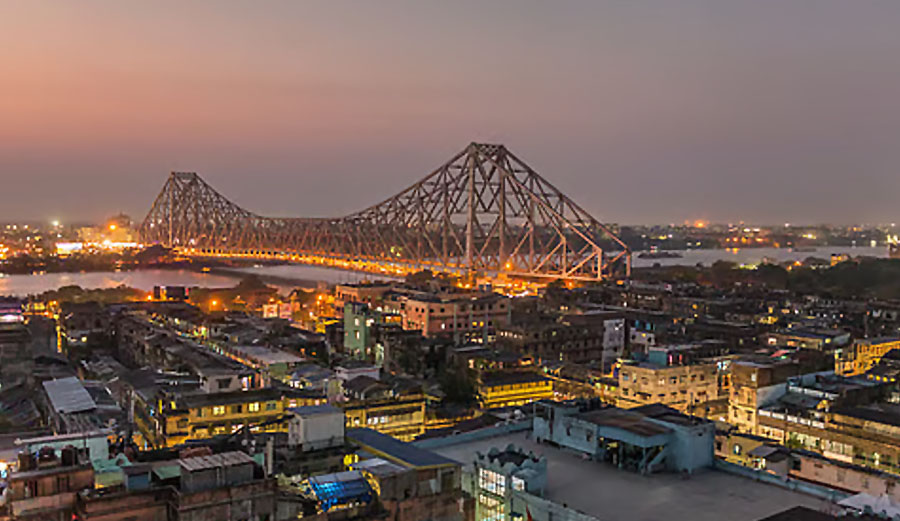“Why do we have to move house again, Dad? Will I have to leave all my friends again?” asked Raj, Ritwik’s 8-year-old son.
It’s the third time in two years.
Each time, the landlord wanted a higher rent for their 2BHK apartment.
How do you explain to a child why their bedroom keeps changing due to rent inflation in our cities?
When Dreams Meet Reality in Big Cities
The predicament is not unique to Ritwik.
Crores of young Indians living on rent are facing the same problem in India.
Ritwik, a young software engineer, arrived in Kolkata during his student days.
Later on, he started his working life, got married, and decided to settle down in the city. He was excited, raring to go.
Then came the apartment hunt. Navigating the terms and conditions he could afford, he chose an apartment in Garia.
But his happiness was short-lived. He had to move house less than a year later.
This story repeats itself thousands of times every month. People move to cities in search of opportunities, only to find that housing eats up most of their income. The math is simple but brutal.
Rents are going up much faster than people’s earnings.
The Real Cost of Sky-High Rents
When rent takes up 40% or 50% of your income, something has to give.
Maybe it’s that emergency fund you wanted to build. Perhaps it’s the vacation you promised your family.
High rents don’t just drain bank accounts. They steal dreams and delay life goals.
Young professionals delay buying their own homes. Families postpone having children. Students drop out of good colleges because they can’t afford city living. The ripple effects touch every corner of life.
Why Your Landlord Keeps Raising Rent
There is a reason why rents keep increasing in our cities.
Of course, the cost of living inches up, and the landlords need to protect their income.
But there is a far more important ground for the rent inflation.
Cities are growing faster than we can build homes. New IT parks open, creating thousands of jobs. But where will these workers live? The supply of housing hasn’t caught up with demand. And until it does, rents will keep climbing.
Is there a respite for the likes of Ritwik on the horizon?
The Affordable Housing Promise
Can affordable housing be the answer to Ritwik’s difficulty?
Many experts believe affordable housing could be the answer to our rent problems.
Think about it this way: if there were more budget-friendly homes available, people wouldn’t have to go for rental options.
The government has several schemes aimed at creating affordable housing.
It is apparently a good idea because people can pay the same EMI and buy their own homes. EMIs remain unchanged during the loan tenure and can protect homebuyers from rent inflation.
What Good Affordable Housing Looks Like
We’re not talking about cramped, poorly built apartments in the middle of nowhere.
Good affordable housing means decent homes in well-connected areas. Places with proper water supply, electricity, and transport links. Homes where families can actually live comfortably without breaking the bank.
These residential developments can forgo some of the fancy amenities (like a swimming pool or amphitheatre) and consequently, the maintenance charges are also low.
The Challenges We Face
Building affordable housing sounds simple, but reality is different.
Land in cities costs a fortune. Construction materials keep getting expensive. Interest rates on loans make projects costly to finance.
There’s also the challenge of location. Affordable doesn’t mean isolated. But finding reasonably priced land in well-connected areas is like searching for a diamond in a coal mine.
Developers often have to choose between affordability and convenience.
Government Push vs Ground Reality
Policy makers understand the problem. Schemes like Pradhan Mantri Awas Yojana aim to provide housing for all. Various State governments offer incentives to builders who create affordable residences.
But implementation often lags behind announcements. By the time affordable homes get built, the housing crisis has already worsened.
However, there is one investment that can protect common people from inflation.
Real Estate: An Anti-Inflation Investment
Here’s an interesting twist.
While tenants struggle with ever-increasing rents, property owners see real estate as protection against inflation. Your rent going up means their property value is increasing too.
This creates a complex situation. Real estate does hedge against inflation, but only if you can afford to buy in the first place.
The good news is that now you can invest in real estate even if you do not own a king’s treasury.
Here’s how you can invest in properties without even buying them.
Looking Beyond Quick Fixes
Affordable housing will help, but it’s not a magic solution.
We also need better urban planning. Cities should grow in ways that don’t create housing shortages. Public transport improvements can make distant areas more livable. This reduces pressure on prime locations.
In fact, rapid urban transport like Metro can be a game-changer to mitigate the crisis.
The Path Forward
The rent crisis won’t solve itself overnight. But affordable housing gives us a fighting chance.
When more people have decent, reasonably priced homes, everyone benefits. Renters save money. Cities become more livable. The economic growth can be more sustainable..
The question isn’t whether we need more affordable housing. It’s how quickly we can make it happen.
Because every month of delay means another generation of young Indians spending their prime years just trying to afford a roof over their heads.






